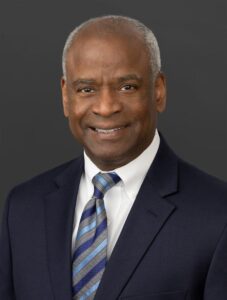
The relationship between borrower and lender is not unlike many others in that both participants enter with the intent and expectation that the future will unfold smoothly—along with the cognizance that, whether the chance is realistic or remote, it may not. Savvy borrowers, going in, should have an understanding of their rights in the event that they are unable to fulfill their obligations to the lender (due to inability to pay or other reasons). Likewise, sophisticated lenders will take steps at the outset, before dollars change hands, to ensure that their interests are maximally protected. One way lenders accomplish this is through the taking of security interests in collateral under Article 9 of the Uniform Commercial Code (“UCC”). (Although the UCC has been adopted in some form by all fifty states, references to the UCC herein are to the North Carolina statute, codified in chapter 25 of the General Statutes of North Carolina, unless otherwise stated.) If the “debtor” has granted a security interest in collateral and the security interest has been properly perfected under Article 9 of the UCC,[1] then upon a default under the applicable security agreement the “secured party”[2] may enforce its rights and exercise its remedies (in accordance, in each case, with Article 9 and the terms of the agreement itself) by taking action against the collateral. This article discusses some of those rights and remedies.
Default and Part 6
Default itself is not defined in Article 9 of the UCC; rather, Article 9 leaves to the parties the task of determining—typically in the security agreement or other related document—the situations in which the debtor’s failure to live up to its end of the bargain may entitle the secured party to exercise remedies against the collateral.[3]
After a default has occurred, a secured party has the rights provided in Part 6 of Article 9 of the UCC (titled “Default”) and, except with respect to certain nonwaivable provisions set forth in section 25-9-602, those provided by agreement of the parties.[4] Part 6 contains rules pertaining to the rights of the parties following a default, collection and enforcement, disposition of collateral, and accounting for surpluses and/or deficiencies. Additional rules establish process-oriented requirements, such as the notices that must be given to defaulting debtors and secondary obligors (e.g., guarantors) before collateral may be disposed of. Although some of the rules set forth in Part 6 can be waived or varied by agreement of the parties, certain rules, to the extent they give rights to a debtor or obligor and impose duties on a secured party, may not be waived. These rules are stated with specificity in section 25-9-602, and where applicable certain of these are referenced in the discussion below.
Remedies and the Nature of the Collateral
Just as there are various types and categories of collateral under Article 9, there exist different remedies that may be pursued by the secured party depending on the nature of the collateral. Broadly speaking, in exercising remedies, a secured party may notify account debtors to make payment directly to the secured party if the collateral consists of accounts or certain other rights to payment, may apply funds on deposit in deposit accounts, may repossess collateral, may accept collateral in full or partial satisfaction of the obligations, and/or may dispose of collateral via judicial or nonjudicial sale (whether on the debtor’s premises or at another location).
Accounts and Deposit Accounts
Accounts
In cases where the collateral consists of an account or other specified right to payment, a perfected secured party’s essential remedy is to enforce the debtor’s rights against the account debtor,[5] including requiring the account debtor to make payment directly to the secured party and realizing on any collateral securing the payment obligation. Section 25-9-607(a) provides that a secured party
if so agreed and in any event after default . . . (1) [m]ay notify an account debtor or other person obligated on collateral to make payment or otherwise render performance to or for the benefit of the secured party; (2) [m]ay take any proceeds to which the secured party is entitled under [section] 25-9-315; and (3) [m]ay enforce the obligations of an account debtor or other person obligated on collateral and exercise the rights of the debtor with respect to the obligation of the account debtor or other person obligated on collateral to make payment or otherwise render performance to the debtor, and with respect to any property that secures the obligations to the account debtor or other person obligated on the collateral.[6]
Clause (3) of the foregoing makes clear that a secured party may step into the shoes of the debtor in proceeding against collateral securing an account debtor’s obligation to the debtor. This would include, for example, foreclosing on personal property under the UCC and/or real property under applicable foreclosure statutes. In this regard, if it is necessary to enable a secured party to exercise the right of a debtor under clause (3) to enforce a mortgage nonjudicially,
the secured party may record in the office in which a record of the mortgage is recorded: (1) [a] copy of the security agreement that creates or provides for a security interest in the obligation secured by the mortgage; and (2) [t]he secured party’s sworn affidavit in recordable form stating that (a) [a] default has occurred . . . ; and (b) [t]he secured party is entitled to enforce the mortgage nonjudicially.[7]
Of note, a secured party must “proceed in a commercially reasonable manner” if it undertakes to collect from or enforce an obligation of an account debtor or other person obligated on collateral.[8] The secured party may deduct from any amounts collected the “reasonable expenses of collection and enforcement, including reasonable attorney’s fees and legal expenses incurred by the secured party.”[9]
Deposit Accounts
A secured party with a perfected security interest in a deposit account may realize upon the funds in the account as provided in section 25-9-607. Where collateral consists of a deposit account over which the secured party has control under section 25-9-104(a)(1) (i.e., the secured party is the bank with which the deposit account is maintained), if so agreed and in any event after default, the secured party may apply the balance of the deposit account to the obligation secured by the deposit account.[10] Where collateral consists instead of a deposit account over which the secured party has control under section 25-9-104(a)(2) (i.e., the debtor, the secured party, and the bank are parties to an authenticated record providing for the secured party’s control over the account) or section 25-9-104(a)(3) (i.e., the secured party becomes the bank’s customer with respect to the deposit account), if so agreed and in any event after default, the secured party “may instruct the bank to pay the balance of the deposit account to or for the benefit of the secured party.”[11]
Application of Collection/Enforcement Proceeds
Application by a secured party of the proceeds of a collection or enforcement under section 25-9-607 is governed by section 25-9-608. Under this section,
(1) A secured party shall apply or pay over for application the cash proceeds of collection or enforcement . . . in the following order to:
- The reasonable expenses of collection and enforcement and, to the extent provided for by agreement and not prohibited by law, reasonable attorney’s fees and legal expenses incurred by the secured party;
- The satisfaction of obligations secured by the security interest or agricultural lien under which the collection or enforcement is made; and
- The satisfaction of obligations secured by any subordinate security interest in or other lien on the collateral subject to the security interest or agricultural lien under which the collection or enforcement is made if the secured party receives an authenticated demand for proceeds before distribution of the proceeds is completed.[12]
If requested by a secured party, the holder of a subordinate security interest or other lien must “furnish reasonable proof of the interest or lien within a reasonable time”; and if it fails to do so, the secured party “need not comply with the holder’s demand.”[13] A secured party “need not apply or pay over for application any noncash proceeds of collection or enforcement unless the failure to do so would be commercially unreasonable”; however, if the secured party does apply or pay over for application noncash proceeds, it must “do so in a commercially reasonable manner.”[14] A secured party must also account to and pay a debtor for any surplus, and the obligor remains liable for any deficiency.[15] However, if the underlying transaction is a sale of accounts, chattel paper, payment intangibles, or promissory notes, the debtor is not entitled to any surplus, and the obligor is not liable for any deficiency.[16] To the extent that section 25-9-608(a) gives rights to a debtor or obligor and imposes duties on a secured party, with respect to the application or payment of noncash proceeds of collection or enforcement, or the accounting for or payment of surplus proceeds of collateral, such provisions may not be waived or varied by the debtor or obligor.[17]
Repossession and Breach of the Peace
Repossession
With respect to tangible collateral, a secured party has the right to seize and/or require the debtor to make the collateral available to the secured party. Section 25-9-609(a) provides that “after default a secured party: (1) [m]ay take possession of the collateral; and (2) [w]ithout removal, may render equipment unusable and dispose of collateral on a debtor’s premises under [section] 25-9-610.”[18] A secured party may take such action pursuant to judicial process or, if it does so “without breach of the peace,” without judicial process.[19] In addition, “if so agreed and in any event after default, a secured party may require the debtor to assemble the collateral and make it available to the secured party at a place to be designated by the secured party that is reasonably convenient to both parties.”[20]
Breach of the Peace
What would constitute a “breach of the peace” is left unaddressed in the statute and, rather, is “left to continuing development by the courts.”[21] Despite this omission, courts regularly describe breach of the peace as tending to cause violence or similar responses.[22] In North Carolina, case law also indicates that whether breach of the peace occurs may hinge on whether the repossessor has any face-to-face interaction with the debtor. It is well-established that “if there is confrontation at the time of [an attempted] repossession, the secured party must cease the repossession” or risk breaching the peace.[23] In contrast, where there is no confrontation, the North Carolina Court of Appeals has adopted a five-part balancing test to determine whether a breach of the peace occurred: “(1) where the repossession took place, (2) the debtor’s express or constructive consent, (3) the reactions of third parties, (4) the type of premises entered, and (5) the creditor’s use of deception.”[24] In Giles v. First Virginia Credit Services, Inc., the court emphasized that the repossession occurred when it was unlikely anyone would be outside, the repossessor did not enter the debtor’s home or any enclosed area, and there was no deception involved.[25] Interestingly, in some sister states, a would-be breach of the peace may need to be incident to the repossession itself, rather than the result of actions taken later, to be actionable.[26] Presumably, the North Carolina five-part test would also consider and evaluate the timing of the reaction in similar circumstances.
Section 25-9-609 does not authorize a secured party who repossesses without judicial process to utilize the assistance of a law enforcement officer.[27] Additionally, in considering whether a breach of the peace has occurred, courts “should hold the secured party responsible for the actions of others taken on the secured party’s behalf, including independent contractors engaged by the secured party to take possession of collateral.”[28] To the extent that section 25-9-609 gives rights to a debtor or obligor and imposes duties on a secured party, neither the debtor nor the obligor may waive or vary the duty of a secured party that takes possession of collateral without judicial process to do so without a breach of the peace.[29]
Disposition and Commercial Reasonableness
Disposition
Disposition of collateral after default is governed by section 25-9-610, which provides that “[a]fter default, a secured party may sell, lease, license, or otherwise dispose of any or all of the collateral in its present condition or following any commercially reasonable preparation or processing.”[30] Every aspect of a disposition—including the method, manner, time, place, and other terms—must be commercially reasonable.[31] If commercially reasonable, disposition may be “by public or private [sale], by one or more contracts, as a unit or in parcels, and at any time and place and on any terms.”[32]
Commercial Reasonableness: Guidelines and Interpretations
The UCC does not define the term commercially reasonable with precision. However, it does provide certain guidelines and interpretations of what constitutes a commercially reasonable disposition. For example, the official commentary to UCC Article 9 offers the following:
Although the term is not defined, as used in this article, a “public disposition” is one at which the price is determined after the public has had a meaningful opportunity for competitive bidding. “Meaningful opportunity” is meant to imply that some form of advertisement or public notice must precede the sale (or other disposition) and that the public must have access to the sale (disposition).[33]
By implication, the failure to provide a “meaningful opportunity” for competitive bidding through public advertising and access could render a public disposition commercially unreasonable.
Section 25-9-627 also offers guidance regarding commercially reasonable dispositions. Under this section, a disposition of collateral is made in a commercially reasonable manner if it is made “(1) [i]n the usual manner on any recognized market;[34] (2) [a]t the price current in any recognized market at the time of the disposition; or (3) [o]therwise in conformity with reasonable commercial practices among dealers in the type of property that was the subject of the disposition.”[35]
[The] fact that a greater amount could have been obtained by a collection, enforcement, disposition, or acceptance at a different time or in a different method from that selected by the secured party is not of itself sufficient to preclude the secured party from establishing that the collection, enforcement, disposition or acceptance was made in a commercially reasonable manner.[36]
However, it may indicate to the court that it should carefully scrutinize all aspects of the disposition.[37]
Courts analyzing commercial reasonableness frequently weigh factors such as whether the lender gave the borrower reasonable notice of the foreclosure sale, provided potential bidders adequate time and access for due diligence, advertised the sale in suitable news outlets, and hired a broker or auctioneer to conduct the sale.[38] A prime example of factors weighed in determining commercial reasonableness comes from Commercial Credit Group, Inc. v. Barber, where the defendant lender erred in several respects, with the court ultimately concluding that a foreclosure sale was not commercially reasonable.[39] This was in part because (1) the lender failed to provide ten full days’ notice of the sale; (2) the newspaper advertisements, while in appropriate publications, limited a bidder’s opportunity to conduct due diligence because the ads circulated only on the two days before and after the Christmas holiday; and (3) the advertised terms misstated the parties’ agreement.[40]
Commercial Reasonableness and Safe Harbor Provisions
Pursuant to section 25-9-603(a), the parties may determine by agreement the standards of commercial reasonableness applicable in a foreclosure scenario, as long as the standards agreed upon are not “manifestly unreasonable.”[41] Indeed, it is not uncommon for security or pledge agreements to contain “safe harbor” provisions whereby the parties agree at the outset on what will be deemed “commercially reasonable” in the event of a foreclosure or other exercise of the secured party’s remedies.
However, recent proceedings in a case pending in the Commercial Division of the New York Supreme Court suggest that courts may require a secured lender to exceed the parameters of a preexisting agreement defining commercial reasonableness, or at least fulfill certain obligations regardless of their exclusion from safe harbor provisions.[42] In WC Braker Portfolio, LLC v. ATX Braker, LLC, the judge granted first a temporary restraining order (“TRO”) and then a preliminary injunction halting the sale of real property in Austin, Texas, even though the lender complied with the safe harbor requirements to which the parties mutually agreed.[43]
In granting a TRO, the court first acknowledged that the parties’ agreement defining commercial reasonableness “does not require” sharing the terms of the sale.[44] Ultimately, though, it was not persuasive to the court that the borrower could have exercised its right of redemption up until the beginning of the public auction, that thousands of potential bidders were contacted with hundreds conducting due diligence, or that multiple third-party purchasers were expected to bid.[45] Instead, the court concluded that it could not “evaluate the commercial reasonableness of [the] sale without having the terms of the sale” and ordered the defendant to share that information even though the safe harbor agreement was silent on that requirement.[46] In due course, the court also ordered the defendant lender to grant the borrower access to the data room and the intercreditor agreement to assist in the reasonableness evaluation.[47]
Later, the court granted a preliminary injunction on the grounds that the borrower should have had a greater opportunity to participate in the sale by either bidding or having complete knowledge of the terms, and that there were apparent restrictions on the bidder pool.[48] More specifically, the court heard that the requirements for bidders were so stringent as to possibly discourage participation in the auction (which the court previously acknowledged at the TRO stage), and especially excluded the borrower.[49] For example, the lender reserved the rights to set a minimum reserve price (in addition to its preexisting right to credit bid), reject all bids, and even accept a lower bid or cancel the sale.[50] The plaintiff also argued that the parties’ pledge agreement was merely a “procedural safe harbor” that failed to reach the level of “a comprehensive statement of commercial reasonableness” under which compliance would show that the sale was commercially reasonable as a whole under the UCC.[51]
Interestingly, the court did not completely disregard the safe harbor provisions and was thus unmoved by the borrowers’ complaints that there was insufficient notice of the sale. It noted that the “very sophisticated” parties had agreed to notice between five and ten days prior to the sale, stating, “That may be [commercially unreasonable] but that’s what you agreed to. I can’t help you with you that.”[52] Thus, lenders can still expect some degree of protection from prearranged safe harbor requirements but should be prepared to distribute the terms of sale and related documents to the borrower in advance of a public sale, and plan to avoid sales terms that appear to limit the pool of potential bidders.
Commercial Reasonableness and Mandatory Provisions
In any event, section 25-9-603(a) does not permit the parties to an agreement defining commercial reasonableness to vary the duty of the secured party to refrain from breaching the peace under section 25-9-609.[53] In addition, the commercial reasonableness requirements set forth in sections 25-9-607(c) and 25-9-610(b) with respect to a secured party’s collection, enforcement, or disposition of collateral may not be waived or varied by the debtor or obligor.[54]
Further, a secured party may not dispose of collateral without first following specified notification procedures. This is in part because proper notice is an important component of commercial reasonableness, allowing an interested party to protect its interests by paying the debt, locating potential buyers, or attending the sale.[55] Before a disposition of collateral under section 25-9-610, a secured party must (except with respect to perishable collateral or collateral that is of a type customarily sold on a recognized market) provide a reasonable authenticated notification of disposition to
- [t]he debtor;
- [a]ny secondary obligor [such as a guarantor (unless waived)]; and
- [i]f the collateral is other than consumer goods:
- [a]ny other person from which the secured party has received, before the notification date,[56] an authenticated notification of a claim of an interest in the collateral;
- [a]ny other secured party or lienholder that, 10 days before the notification date, held a security interest in or other lien on the collateral perfected by the filing of a financing statement that:
- [i]dentified the collateral;
- [w]as indexed under the debtor’s name as of that date; and
- [w]as filed in the [correct] office . . . as of that date; and
- [a]ny other secured party that, 10 days before the notification date, held a security interest in the collateral perfected by compliance with a statute, regulation, or treaty described in [section] 25-9-311(a).[57]
A secured party complies with the notification requirement to other lienholders if, “[n]ot later than 20 days or earlier than 30 days before the notification date, the secured party requests, in a commercially reasonable manner, information concerning financing statements indexed under the debtor’s name in the [proper filing] office”; and, before the notification date, the secured party either does not receive a response or receives a response and sends proper notification to the parties named therein.[58] The contents and form of the notification are prescribed for nonconsumer transactions in section 25-9-613, and for consumer transactions in section 25-9-614. In a nonconsumer transaction, a notice of disposition that is sent after default and ten or more days before the earliest disposition date set forth in the notice is presumptively sent within a reasonable time.[59]
Commercial Reasonableness and Application of Proceeds of a Disposition
Rules governing the application of proceeds of a disposition under section 25-9-610 are set forth in section 25-9-615. In particular, cash proceeds are applied in the following order (and in pertinent part):
(1) The reasonable expenses of retaking, holding, preparing for disposition, processing, and disposing and, to the extent provided for by agreement and not prohibited by law, reasonable attorney’s fees, and legal expenses incurred by the secured party;
(2) The satisfaction of obligations secured by the security interest or agricultural lien under which the collection or enforcement is made;
(3) The satisfaction of obligations secured by any subordinate security interest in or other lien on the collateral if:
- The secured party receives from the holder of the subordinate security interest or other lien an authenticated demand for proceeds before distribution of the proceeds is completed; and
- In a case where a consignor has an interest in the collateral, the subordinate security interest or other lien is senior to the interest of the consignor; and
(4) A secured party that is a consignor of the collateral if the secured party receives from the consignor an authenticated demand for proceeds before distribution of the proceeds is completed.[60]
The secured party may demand from the holder of a subordinate security interest reasonable proof of such interest. The secured party need not apply noncash proceeds unless the failure to do so would be commercially unreasonable. Any surplus must be paid to the debtor, and the obligor remains liable for any deficiency. However, different rules apply for calculating a surplus or deficiency where the purchaser at a disposition is the secured party, a person related to the secured party, or a secondary obligor and the amount of the proceeds “is significantly below the range of proceeds” that a disposition complying with the terms of Part 6, to a noninterested party, would have brought.[61] In such cases, the surplus or deficiency is calculated based on the amount of proceeds that would have been realized in a Part 6–compliant disposition to a noninterested purchaser.[62] To the extent that sections 25-9-615(c) and 25-9-615(d) give rights to a debtor or obligor and impose duties on a secured party, with respect to the application or payment of noncash proceeds of disposition, or the accounting for or payment of surplus proceeds of collateral, such provisions may not be waived or varied by the debtor or obligor.[63]
In an action arising from a transaction (other than a consumer transaction)[64] in which the amount of a deficiency or surplus is in issue, a secured party is presumed to have complied with the provisions of Part 6 unless “the debtor or a secondary obligor places the secured party’s compliance in issue.”[65] In such a case, “the secured party has the burden” of proving compliance.[66] If the secured party cannot do so, the liability of a debtor for a deficiency “is limited to an amount by which the sum of the secured obligation, expenses, and attorney’s fees exceeds the greater of” (i) the proceeds actually realized or (ii) “the amount of proceeds that would have been realized” had the noncomplying secured party complied with the provisions of Part 6.[67] The amount of proceeds that “would have been realized” if the secured party had complied with Part 6 is presumed to be the sum of the secured obligation, expenses, and attorney fees unless the secured party proves that the amount is less than such sum.[68] The foregoing rule codifies the previously recognized “rebuttable presumption rule” and expressly rejects the “absolute bar rule” adopted by some courts, which would bar a secured party from recovering any deficiency in the case of noncompliance with the default rules of Article 9.[69]
Acceptance of Collateral in Full or Partial Satisfaction
In addition, Article 9 of the UCC allows a secured party to accept collateral in full or partial satisfaction of an obligation (i.e., strict foreclosure). Strict foreclosure requires (1) a proposal by the secured party to retain collateral in full or partial satisfaction of an obligation, which must be sent to the debtor, any secondary obligor, and other lienholders or secured parties of record; and (2) an acceptance of the proposal (or failure to object within a specified time) by such parties.[70] A secured party’s acceptance of collateral in full or partial satisfaction of a secured obligation
(1) discharges the obligation to the extent consented to by the debtor; (2) transfers to the secured party all of the debtor’s rights in the collateral; (3) discharges the security interest or agricultural lien that is the subject of the debtor’s consent and any subordinate security interest or lien; and (4) terminates any other subordinate interest.[71]
A debtor, any secondary obligor, or any other secured party or lienholder may redeem collateral by fulfilling “all obligations secured by the collateral” and paying the “reasonable expenses and attorney’s fees” incurred by the secured party as permitted in section 25-9-615(a)(1).[72] To satisfy this requirement, it is not enough that the redeeming party simply give a new promise to pay; rather, this section requires “payment in full of all monetary obligations then due and performance in full of all other obligations then matured.”[73] Any unmatured obligations will remain subject to the security interest.[74] If the entire balance of the secured obligation has been accelerated, the redeeming party must tender the entire balance.[75] A redemption may occur at any time before a secured party has (i) collected collateral under section 25-9-607; (ii) disposed of, or entered into a contract for the disposition of, collateral under section 25-9-610; or (iii) “accepted collateral in full or partial satisfaction” of the secured obligation under section 25-9-622.[76] Except in a consumer goods transaction, the right of redemption may be waived only by an agreement to that effect entered into and authenticated after default.[77]
Conclusion
The rules that a secured party must follow in exercising remedies and enforcing a security interest under Part 6 of UCC Article 9 are complex and will differ depending on the type of collateral involved. At the same time, the rules offer secured parties flexibility by providing alternatives such as disposing of collateral at a public versus a private sale, or retaining collateral in full (or partial) satisfaction of the obligation.
In any event, the secured party must proceed with an understanding of its duties under Part 6, especially with respect to commercial reasonableness. This includes the important prerequisite of providing sufficient advance notice to the debtor, as well as avoiding breaching the peace. Secured parties should also keep in mind that agreements with the borrower defining a commercially reasonable sale are generally enforceable, but they should be prepared to share the terms of sale with the obligor in advance of any sale.
Likewise, debtors and obligors need to be cognizant of their rights—and which rights may and may not be waived—in order to maximize the fairness of a secured party’s enforcement actions.
This article assumes that the security interest has been properly created (i.e., has “attached”) and perfected prior to the default and exercise of remedies. Perfection of a security interest in most types of personal property is addressed in Article 9 and, with respect to certain securities and other “investment property,” Article 8 of the UCC. ↑
The terms debtor, obligor, and secured party are used herein with the meanings given in UCC Article 9. A “debtor” is “(a) [a] person having an interest, other than a security interest or other lien, in the collateral, whether or not the person is an obligor; (b) [a] seller of accounts, chattel paper, payment intangibles or promissory notes; or (c) [a] consignee.” A “secured party” means, in relevant part, “[a] person in whose favor a security interest is created or provided for under a security agreement, whether or not any obligation to be secured is outstanding.” An “obligor” means “a person that, with respect to an obligation secured by a security interest in or an agricultural lien on the collateral, (i) owes payment or other performance on the obligation, (ii) has provided property other than the collateral to secure payment or other performance of the obligation, or (iii) is otherwise accountable in whole or in part for payment or other performance of the obligation.” N.C. Gen. Stat. § 25-9-102. A “debtor” may, but is not required to, be the “obligor” with respect to a secured obligation. ↑
See id. § 25-9-601 cmt. 3. ↑
Id. § 25-9-601(a). ↑
An “account debtor” is “a person obligated on an account, chattel paper, or general intangible.” The term does not include persons obligated to pay a negotiable instrument, even if the instrument constitutes part of chattel paper. Id. § 25-9-102(a)(3). ↑
Id. § 25-9-607(a). ↑
Id. § 25-9-607(b). ↑
Id. § 25-9-607(c); see also infra. ↑
N.C. Gen. Stat. § 25-9-607(d). ↑
Id. § 25-9-607(a)(4). ↑
Id. § 25-9-607(a)(5). ↑
Id. § 25-9-608(a)(1). ↑
Id. § 25-9-608(a)(2). ↑
Id. § 25-9-608(a)(3). ↑
Id. § 25-9-608(a)(4). ↑
Id. § 25-9-608(b). ↑
Id. §§ 25-9-602(4), -602(5). ↑
Id. § 25-9-609(a). ↑
Id. § 25-9-609(b). ↑
Id. § 25-9-609(c). ↑
Id. § 25-9-609 cmt. 3. ↑
See, e.g., Donegal Assocs., LLC v. Christie-Scott, LLC, 241 A.3d 1011, 1026 (Md. Ct. Spec. App. 2020) (determining no breach of peace where a reasonably conducted repossession was unlikely to incite “immediate public turbulence”); Giles v. First Va. Credit Servs., Inc., 560 S.E.2d 557, 564–65 (N.C. Ct. App. 2002) (collecting cases requiring incitement of violence). ↑
Pruitt v. Pernell, 360 F. Supp. 2d 738, 747 (E.D.N.C. 2005) (quoting Everett v. U.S. Life Credit Corp., 327 S.E.2d 269, 270 (N.C. Ct. App. 1985)). ↑
Giles, 560 S.E.2d at 565–66 (concluding that no breach of the peace occurred where a 4:00 a.m. vehicle repossession awakened and alarmed a neighbor, who immediately alerted the debtor). ↑
Id. ↑
See, e.g., Jordan v. Citizens & S. Nat’l Bank of S.C., 298 S.E.2d 213, 213–14 (S.C. 1982) (concluding no breach of the peace existed despite an extensive, reckless highway pursuit of a recently repossessed vehicle because the confrontation occurred only after the repossession); Wallace v. Chrysler Credit Corp., 743 F. Supp. 1228, 1233 (W.D. Va. 1990) (determining no breach of the peace in part because any “disturbance of the public tranquility” occurred only after repossession was complete). ↑
N.C. Gen. Stat. § 25-9-609 cmt. 3. ↑
Id. ↑
Id. § 25-9-602(6). ↑
Id. § 25-9-610(a). ↑
Id. § 25-9-610(b). ↑
Id. ↑
Id. § 25-9-610 cmt. 7. ↑
The concept of a “recognized market” is intended to be limited and “applies only to markets in which there are standardized price quotations for property that is essentially fungible, such as stock exchanges.” See id. § 25-9-627 cmt. 4. ↑
Id. § 25-9-627(b). ↑
Id. § 25-9-627(a). ↑
Id. § 25-9-627 cmt. 2. ↑
See, e.g., Vornado PS, LLC v. Primestone Inv. Partners, LP, 821 A.2d 296, 306–07 (Del. Ch. 2002) (noting that the seller provided ample notice of the public auction, hired a licensed auctioneer, marketed the sale in both the New York Times and Chicago Tribune, and took other steps to better market the collateral); In re Zsa Zsa Ltd., 352 F. Supp. 665, 668–70 (S.D.N.Y. 1972) (affirming a sale as reasonable despite a low sale price compared to the collateral value where an experienced auctioneer was hired, the sale was advertised in the New York Times, eight days’ notice was provided, and bidders had ample time to inspect the collateral); Com. Credit Grp., Inc. v. Falcon Equip., LLC, No. 3:09cv376-DSC, 2010 WL 144101, at *9 (W.D.N.C. Jan. 8, 2010) (discussing that the borrower received authenticated notifications of disposition within a reasonable time after default and before the auction, and that a detailed notice of public auction was published multiple times in an appropriate regional newspaper). ↑
682 S.E.2d 760 (N.C. Ct. App. 2009). ↑
Id. at 764–67. ↑
N.C. Gen. Stat. § 25-9-603(a). ↑
WC Braker Portfolio, LLC v. ATX Braker, LLC, No. 651792/2022 (N.Y. Sup. Ct. filed Apr. 12, 2022). At the time of publishing, this case is currently stayed pending the outcome of parallel bankruptcy proceedings in Texas. ↑
See Order to Show Cause at 2, Braker, No. 651792/2022 (Doc. No. 25); Decision & Order on Motion at 1, Braker, No. 651792/2022 (Doc. No. 40). ↑
Transcript of TRO Hearing at 24, 33, 39–40, Braker, No. 651792/2022 (Doc. No. 41). ↑
Id. at 17, 33. ↑
Id. at 40. ↑
Interim Order, Braker, No. 651792/2022 (Doc. No. 28). ↑
Transcript of Preliminary Injunction Hearing at 48–50, Braker, No. 651792/2022 (Doc. No. 64). ↑
Id. at 9–12. ↑
Id. at 13–14. ↑
Id. at 30. ↑
Transcript of TRO Hearing at 32, Braker, No. 651792/2022 (Doc. No. 41). ↑
N.C. Gen. Stat. § 25-9-603(b). ↑
Id. §§ 25-9-602(3), 25-9-602(7). ↑
Gregory Poole Equip. Co. v. Murray, 414 S.E.2d 563, 566–67 (N.C. Ct. App. 1992). ↑
The “notification date” is the earlier of the date on which “(1) [a] secured party sends to the debtor and any secondary obligor an authenticated notification of disposition, or (2) [t]he debtor and any secondary obligor waive the right to notification.” N.C. Gen. Stat. § 25-9-611(a). A debtor or secondary obligor may waive the right to notification of disposition of collateral under section 25-9-620(e) only by an agreement to that effect entered into and authenticated after default. ↑
Id. § 25-9-611(c). ↑
Id. § 25-9-611(e). ↑
Id. § 25-9-612(b). ↑
Id. § 25-9-615(a). ↑
Id. § 25-9-615(f). ↑
Id. ↑
Id. §§ 25-9-602(4), -602(5). ↑
The statute leaves to the courts the determination of proper rules in consumer transactions. See id. §§ 25-9-626(b), 25-9-626(b) cmt. 4. ↑
Id. § 25-9-626(a). ↑
Id. ↑
Id. ↑
Id. ↑
See id. § 25-9-626 cmt. 3. ↑
See id. §§ 25-9-620 to -621. ↑
Id. § 25-9-622(a). ↑
Id. § 25-9-623(b). ↑
Id. § 25-9-623 cmt. 2. ↑
Id. ↑
Id. ↑
Id. § 25-9-623(c). ↑
Id. § 25-9-624(c). ↑












